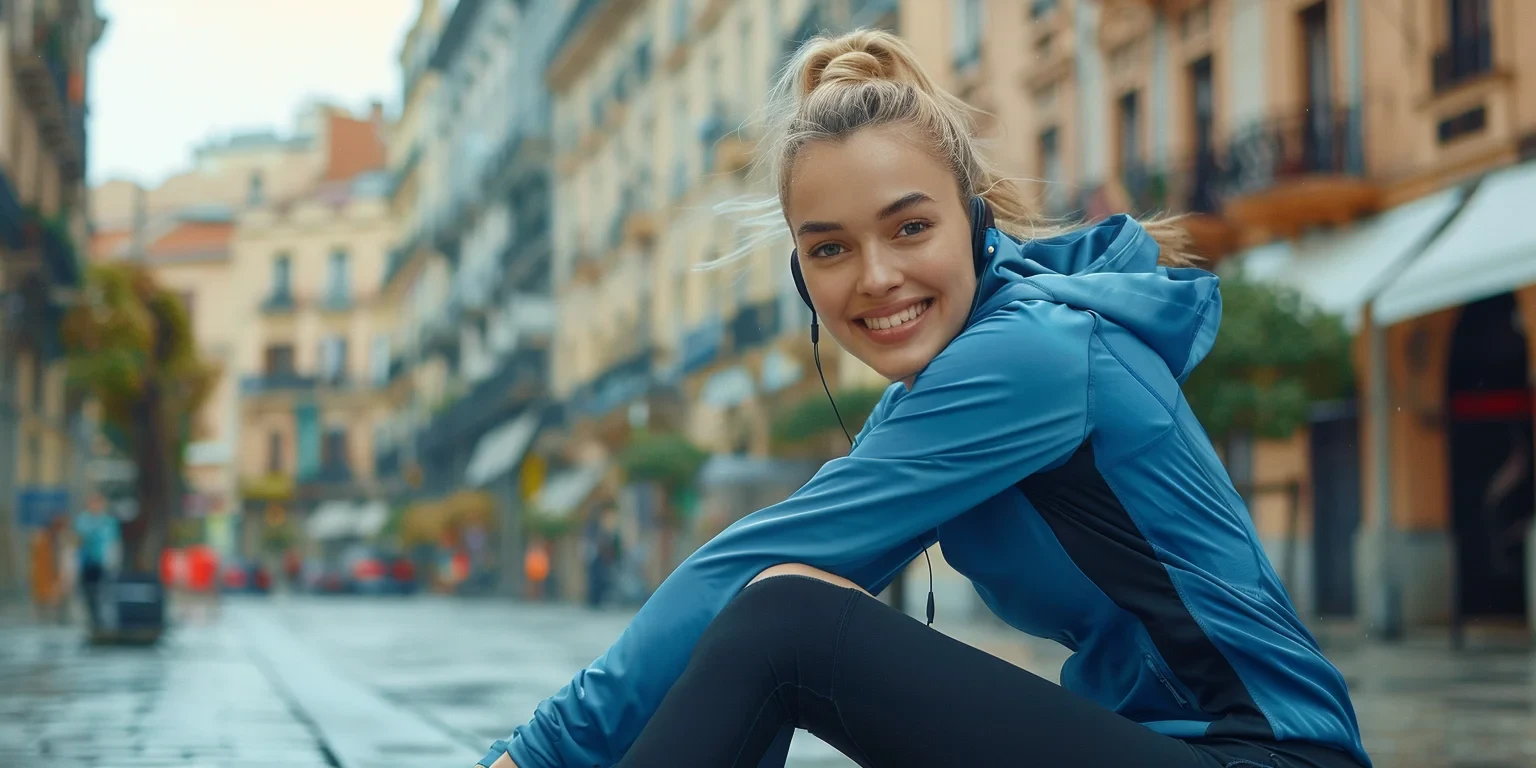Why Your Workout Clothes Matter More Than You Think
Let’s face it: We’ve all been there. You’re halfway through a burpee, and your leggings start sliding down. Or you’re mid-yoga pose, and your shirt rides up, exposing your stomach. Suddenly, your focus shifts from crushing your workout to adjusting your outfit. Sound familiar?
Your workout clothes aren’t just fabric—they’re your second skin during exercise. They can make or break your motivation, performance, and even your confidence. In this ultimate guide, we’ll dive deep into how to choose workout gear that fuels your fitness journey, aligns with your personality, and makes you feel unstoppable. From moisture-wicking fabrics to color psychology, we’ve got you covered.
Spoiler alert: By the end of this guide, you’ll never look at activewear the same way again.
Chapter 1: The Science of Performance Fabrics: What Your Clothes Are Really Doing
1.1 Moisture-Wicking Magic: Stay Dry, Stay Focused
Ever wonder why cotton isn’t your gym BFF? Cotton absorbs sweat like a sponge, leaving you damp, cold, and prone to chafing. Enter moisture-wicking fabrics like polyester, nylon, and merino wool. These materials pull sweat away from your skin, evaporating it quickly to keep you dry.
Pro Tip: Look for terms like “Dri-FIT” (Nike), “Climalite” (Adidas), or “HeatGear” (Under Armour) on labels.
1.2 Breathability: Let Your Skin Breathe
Breathable fabrics have tiny pores that allow airflow, preventing overheating during high-intensity workouts. Mesh panels on shirts, shorts, or shoes amplify ventilation.
Trend Alert: Brands like Lululemon and Gymshark now integrate laser-cut perforations for maximum airflow without sacrificing style.
1.3 Compression Gear: The Hug Your Muscles Crave
Compression clothing isn’t just for marathon runners. Studies show it improves blood circulation, reduces muscle fatigue, and speeds recovery. Plus, the snug fit can boost proprioception (body awareness), enhancing form during lifts or yoga.
Who It’s For: Lifters, runners, and anyone prone to muscle soreness.
Chapter 2: Fit Matters: How to Find Your Goldilocks Zone
2.1 The Art of “Not Too Tight, Not Too Loose”
Ill-fitting clothes distract you. Too tight? Restricted movement. Too loose? Fabric flapping during sprints. Here’s your cheat sheet:
- Tops: Should allow full range of motion for overhead presses or downward dogs.
- Bottoms: Stay put during squats without digging into your waist.
- Sports Bras: The “band test”: If you can slide two fingers under the band, it’s snug but not suffocating.
2.2 Seams and Stitching: The Devil’s in the Details
Flatlock seams prevent chafing during long runs, while reinforced stitching in high-stress areas (like crotches or underarms) ensures durability.
Brand Spotlight: Outdoor Voices uses seamless tech for buttery-soft leggings that feel like a second skin.
Chapter 3: Confidence-Boosting Style: Dress Like the Best Version of You
3.1 Color Psychology: What Your Activewear Says About You
Colors aren’t just aesthetic—they influence mood.
- Red: Energizes and increases heart rate (perfect for HIIT).
- Blue: Calming and focused (ideal for yoga or Pilates).
- Black: Slimming, timeless, and hides sweat stains.
Viral-Worthy Hack: Match your outfit color to your workout vibe. Feeling powerful? Go bold with neon. Need zen? Stick to earthy tones.
3.2 Prints and Patterns: Stand Out or Blend In?
Animal prints, geometric designs, or subtle logos—your choice! Patterns can distract from sweat marks or highlight your curves.
Trend Alert: TikTok’s obsession with “athleisure aesthetics” means retro ‘90s prints and tie-dye are having a moment.
3.3 The Confidence Hack: Dress for the Workout and the Post-Workout
Activewear isn’t just for the gym. Stylish pieces like cropped hoodies, joggers, or sleek tennis skirts transition seamlessly to coffee runs or errands. When you look good, you feel good—even after your cool-down.
Brand to Watch: Alo Yoga masters the art of “studio-to-street” fashion.
Chapter 4: Sustainability: Look Good, Feel Good, Do Good
4.1 Eco-Friendly Fabrics: The Rise of Recycled Polyester
The activewear industry is notorious for plastic waste. But brands like Patagonia and Girlfriend Collective now use recycled ocean plastics or discarded fishing nets to create leggings and tops.
4.2 Ethical Production: Support Brands That Care
Check for certifications like Fair Trade or Bluesign® to ensure workers are paid fairly and factories minimize environmental harm.
Pro Tip: Extend your gear’s lifespan by washing in cold water and air-drying.
Chapter 5: Budget vs. Splurge: Where to Invest (and Where to Save)
- Splurge: Sports bras, running shoes, and winter layers (quality = longevity).
- Save: Basic tees, leggings for low-impact workouts.
Budget Hack: Follow #ActivewearSales on Instagram for flash deals.
Chapter 6: The Viral-Worthy Checklist: Your 10-Step Guide to Perfect Activewear
- Fabric First: Prioritize moisture-wicking and breathability.
- Fit Test: Jump, stretch, and lunge in the dressing room.
- Seam Check: Avoid bulky stitching in friction zones.
- Color Code: Match hues to your workout energy.
- Layer Smart: Zip-up jackets for outdoor runs, tanks for hot yoga.
- Sustainability Score: Opt for recycled materials.
- Confidence Factor: Does it make you feel unstoppable?
- Versatility: Can you wear it beyond the gym?
- Care Routine: Follow washing instructions to preserve tech features.
- Budget Balance: Invest in staples, save on trends.
Conclusion: Your Wardrobe, Your Power Suit
Your workout clothes are more than fabric—they’re armor. They shield you from distractions, amplify your performance, and reflect your personality. Whether you’re deadlifting, downward-dogging, or dancing through Zumba, the right gear turns “I have to workout” into “I get to workout.”
So next time you slip into those buttery-soft leggings or that breathable tank, remember: You’re not just dressing for the gym. You’re dressing for the stronger, fiercer, unapologetically confident version of yourself.
